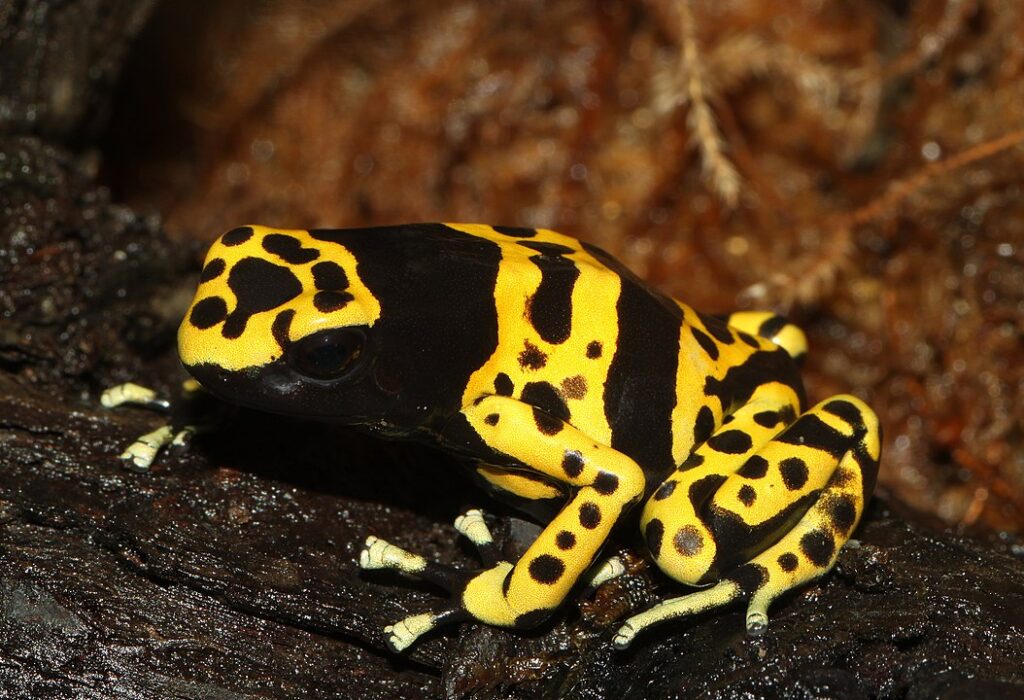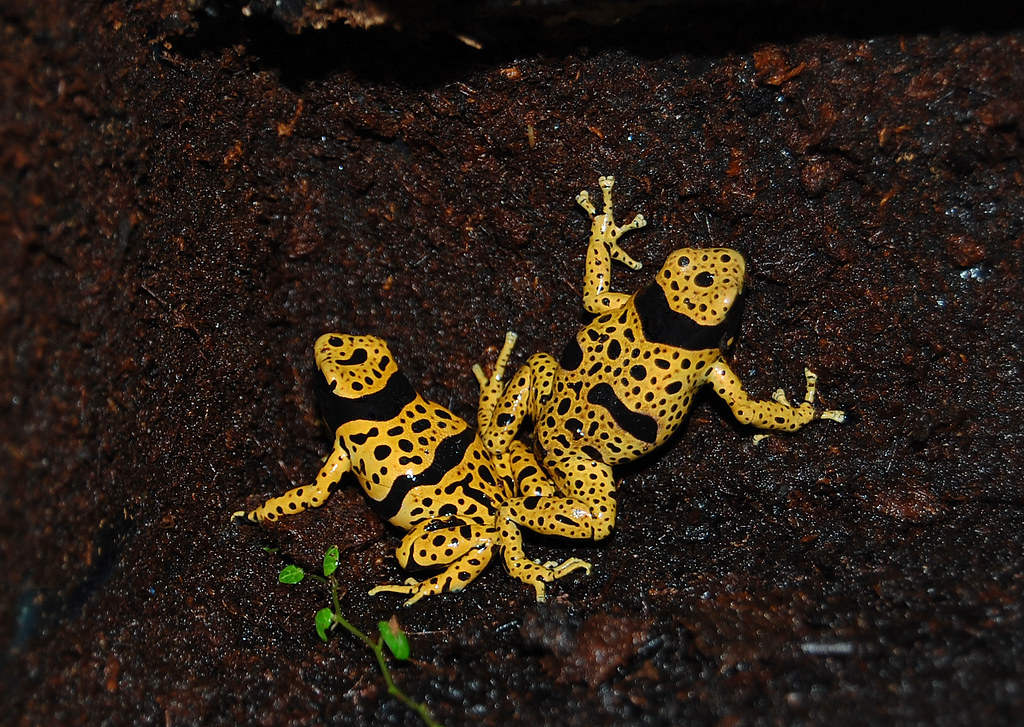Yellow-banded poison dart frog
Dendrobates leucomelas

Strong colours deter predators
All yellow-banded poison dart frogs show variations in their appearance. They are often banded in yellow and black but sometimes orange as well, and the pattern of each individual is unique. The strong colours are meant to deter predators, as the yellow-banded poison dart frog is very poisonous.
As with other poison dart frogs, the yellow-banded frog does not produce the toxin by itself. The toxin is stored in the frog’s body when it eats poisonous insects. A poison dart frog in captivity is fed other kinds of insects and is therefore not poisonous.

Photo: H.-Krisp-CC-BY
Tough competition
Yellow-banded poison dart frogs are diurnal and solitary, except for the mating season when the males work very hard to outcompete their rivals. They display their bright colours, emit loud calls, and fight other males.
When a female has chosen a male to mate with, the courting continues with a mutual display in which the frogs emit calls, stamp with their feet, and brush against each other. Then the male shows a spot that he has selected for the female to lay her eggs in. When the eggs have been fertilised, the male guards them and keeps them wet, and when the tadpoles have hatched he transports them to a small pool of water that he has selected.

Photo: YVDB7-CC-BY-NC-SA
Very loud call
The call of the yellow-banded poison dart frog is one of the loudest among poison dart frogs. The frog is also, as far as we know, the only poison dart frog that can go into aestivation – a form of hibernation that takes place during dry spells. At present, the species is not threatened in the wild, but due to destruction of the rainforest and growing cities, there is a risk of the situation becoming worse.
Distribution worldwide

Northern South America.
Threat based on the Red List

Trade regulations
CITES: B-listed.